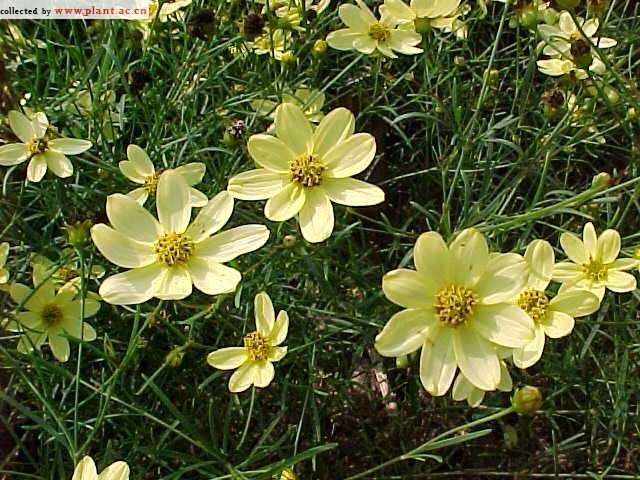Coreopsis verticillata MoonbeamThreadleaf coreopsis
Family:Asteraceae
属:金鸡菊属
common name:Threadleaf coreopsis
introduce:Plant Type: Herbaceous perennial
Family: Asteraceae
Missouri Native: No
Native Range: None
Height: 1.5 to 2 feet
Spread: 1.5 to 2 feet
Bloom Time: June - August
Bloom Color: Creamy yellow
Sun: Full sun (only)
Water: Dry to medium moisture
Maintenance: Low
General Culture:
Easily grown in dry to medium wet, well-drained soil in full sun. Thrives in poor, sandy or rocky soils with good drainage. Tolerant of heat, humidity and drought. Prompt deadheading of spent flower stalks can be tedious for a large planting, but does tend to encourage additional bloom. Plants may be sheared in mid to late summer to promote a fall rebloom and to remove any sprawling or unkempt foliage. Although species plants freely self-seed, Moonbeam is a sterile cultivar. Plants can spread somewhat invasively in the garden by rhizomes.
Noteworthy Characteristics:
Threadleaf coreopsis (also commonly called whorled coreopsis) is a rhizomatous perennial which typically grows in dense, bushy clumps to 1-3 tall. Moonbeam is somewhat more compact (to 2 tall) and features pale yellow, daisy-like flowers (1-2" diameter) with untoothed rays and darker yellow center disks. Flowers appear singly in loose clusters (cymes) in a lengthy late spring to late summer bloom period which sometimes extends to first frost. Shearing plants in mid-summer (early August) when bloom usually tapers down will encourage a fall rebloom. Palmately 3-parted leaves with thread-like segments end a fine-textured and airy appearance to the plant. Plants in the genus Coreopsis are sometimes commonly called tickseed in reference to the resemblance of the seeds to ticks. 1992 Perennial Plant of the Year award.
Problems:
No serious insect or disease problems. Tends to sprawl, particularly if grown in moist and/or fertile soils. Crown rot may occur if grown in moist, poorly drained soils.
Uses:
Borders. Also effective in naturalized areas, native plant gardens or cottage gardens. Good plant for areas with poor, dry soils.
